Abstract
Precipitates were demonstrated in vitro at the orifices of the second stage larvae of Toxocara canis and T. cati when placed in sera derived from rabbits infected with these nematodes. Cross-reactions occurred between these two species.
Furthermore, these precipitates occurring at the oral, excretory pore and the anal orifices of these larvae were shown to be of a specific antibody nature by the use of the direct fluorescent antibody (Coons) staining technique.
The second stage larvae of Toxascaris leonina did not react in this way when examined in the above-mentioned experimental system, or in sera or globulins derived from rabbits infected with T. leonina.
Human sera, taken from clinically suspect cases of visceral larva migrans, were examined in this manner (q.v.). Comparable results were obtained, and it was possible to determine whether fluorescent antibodies were present, and to use this information as an aid to the clinical diagnosis of this disease.
The significance of these findings in relation to the aetiology, pathogenesis and immuno-diagnosis of visceral larva migrans is discussed.
Full text
PDF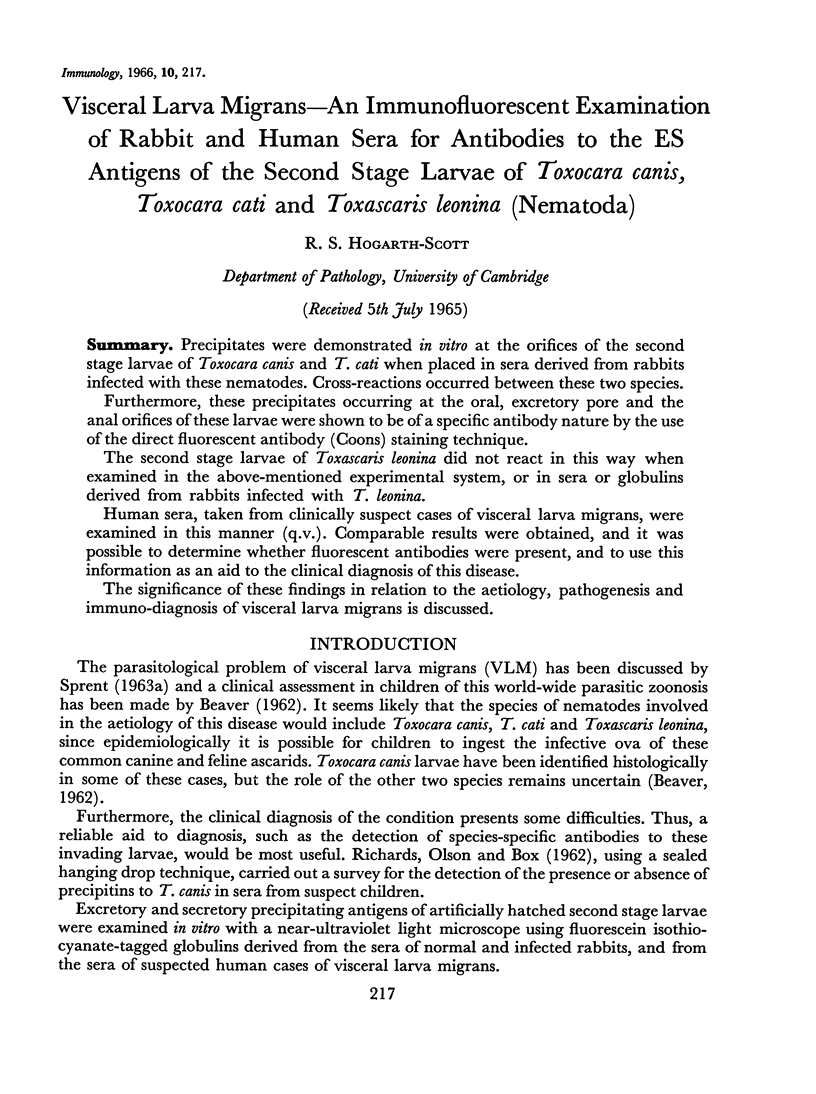
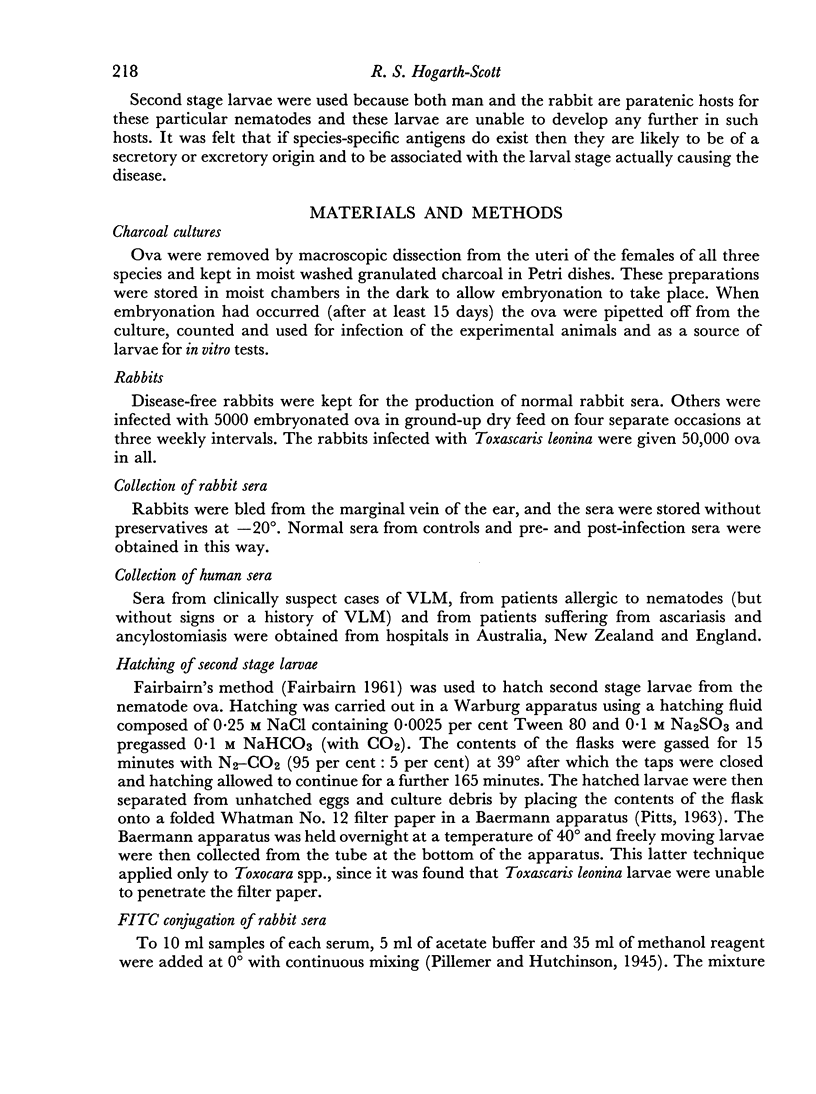
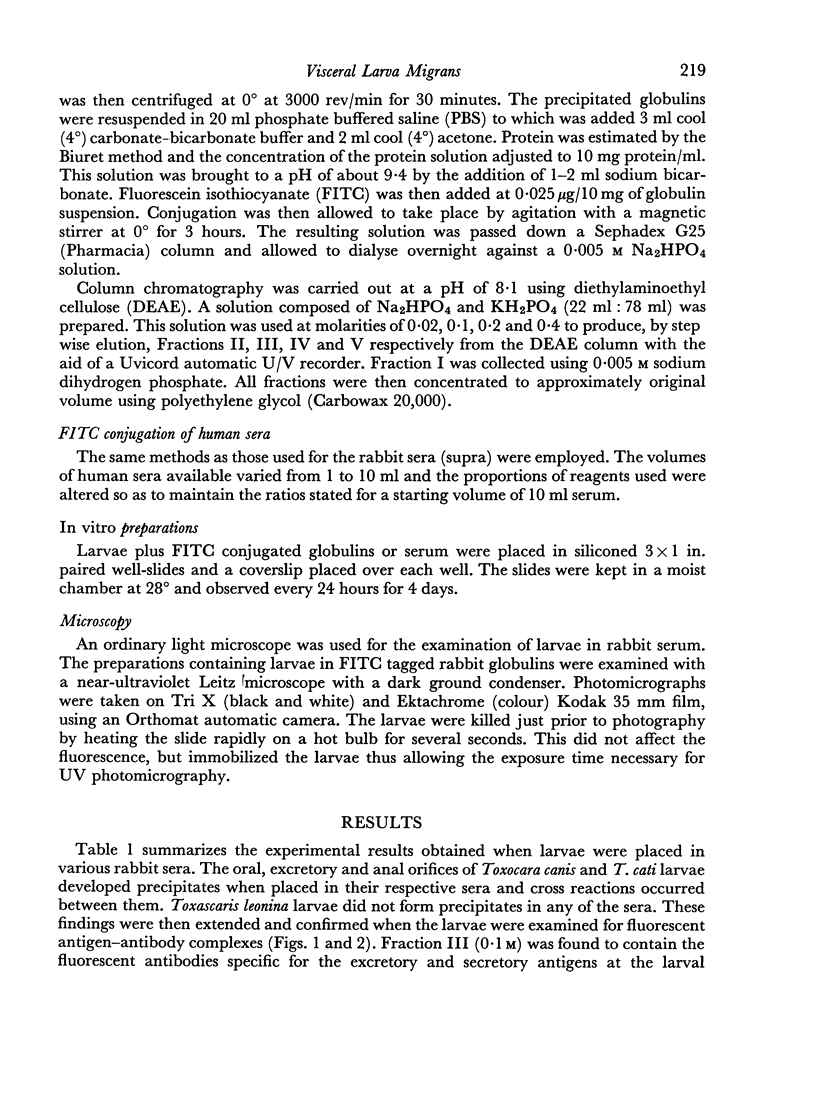
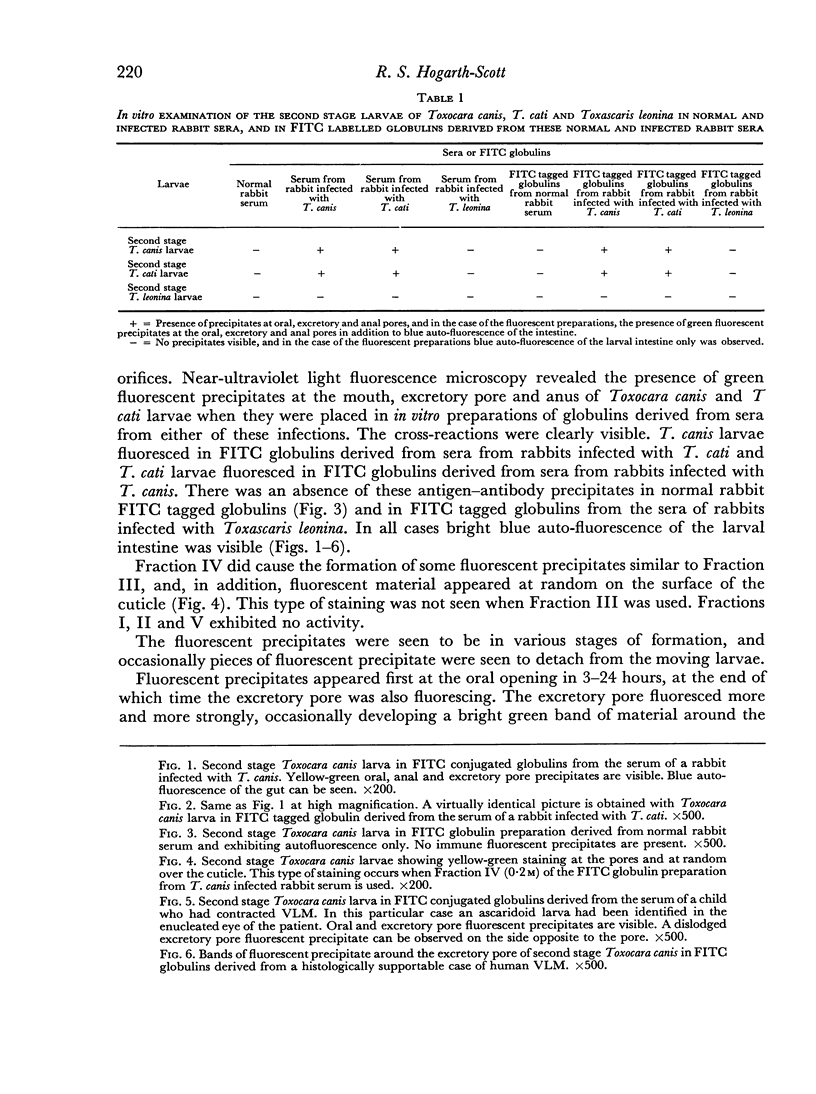

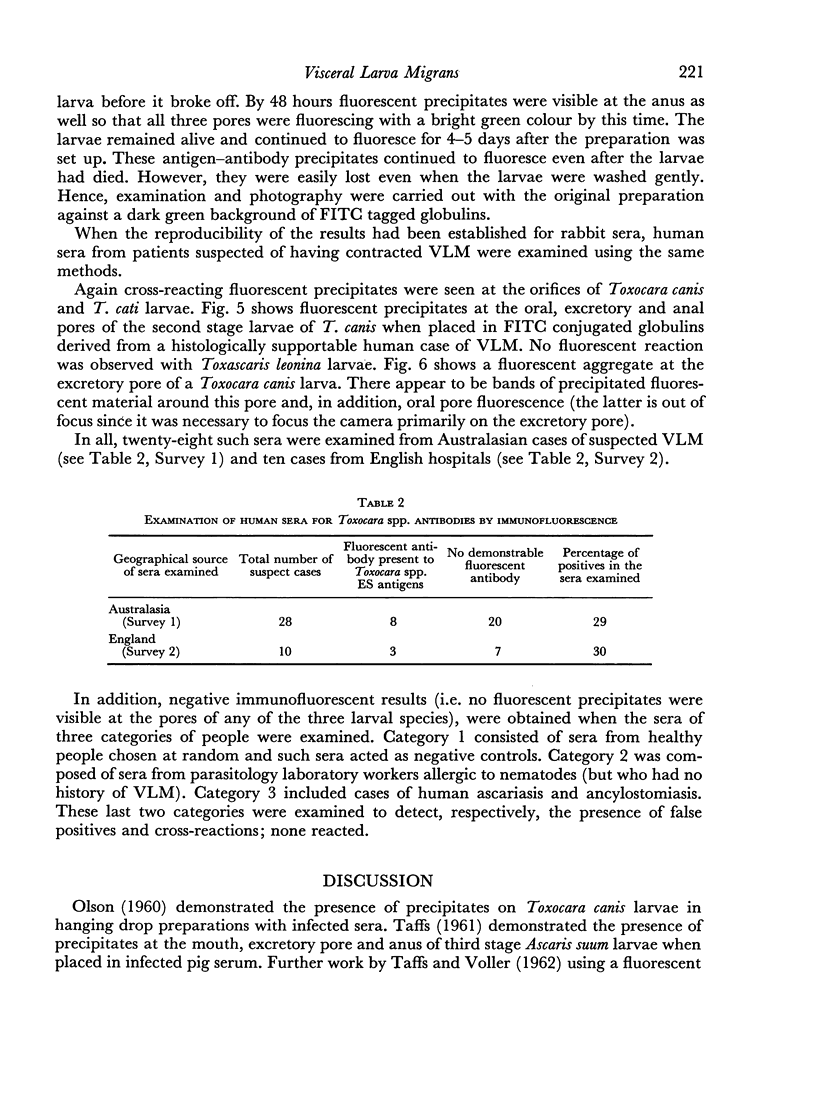
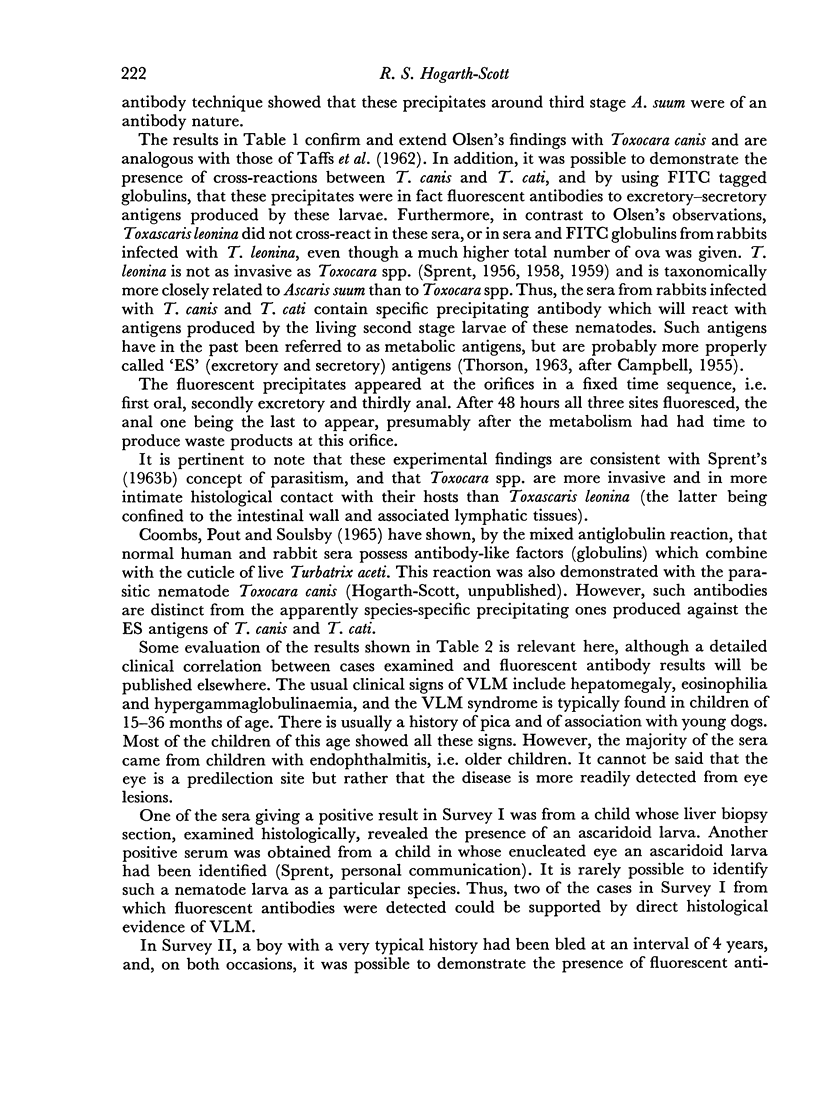
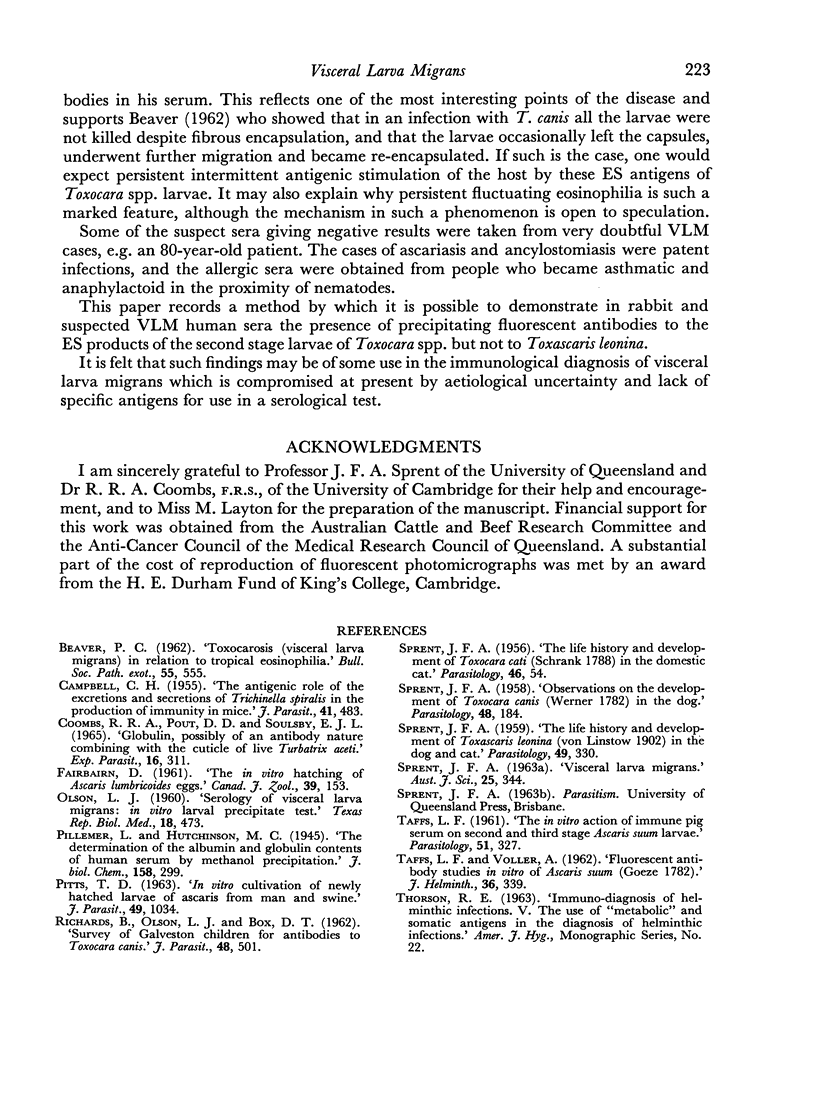
Images in this article
Selected References
These references are in PubMed. This may not be the complete list of references from this article.
- BEAVER P. C. Toxocarosis (visceral larva migrans) in relation to tropical eosinophilia. Bull Soc Pathol Exot Filiales. 1962 Jul-Aug;55:555–576. [PubMed] [Google Scholar]
- CAMPBELL C. H. The antigenic role of the excretions and secretions of Trichinella spiralis in the production of immunity in mice. J Parasitol. 1955 Oct;41(5):483–491. [PubMed] [Google Scholar]
- COOMBS R. R., POUT D. D., SOULSBY E. J. GLOBULIN, POSSIBLY OF ANTIBODY NATURE, COMBINING WITH THE CUTICLE OF LIVE TURBATRIX ACETI. Exp Parasitol. 1965 Jun;16:311–317. doi: 10.1016/0014-4894(65)90052-4. [DOI] [PubMed] [Google Scholar]
- OLSON L. J. Serology of visceral larva migrans: in vitro larval precipitate test. Tex Rep Biol Med. 1960;18:473–479. [PubMed] [Google Scholar]
- PITTS T. D. IN VITRO CULTIVATION OF NEWLY HATCHED LARVAE OF ASCARIS FROM MAN AND SWINE. J Parasitol. 1963 Dec;49:1034–1035. [PubMed] [Google Scholar]
- SPRENT J. F. Observations on the development of Toxocara canis (Werner, 1782) in the dog. Parasitology. 1958 May;48(1-2):184–209. doi: 10.1017/s0031182000021168. [DOI] [PubMed] [Google Scholar]
- SPRENT J. F. The life history and development of Toxascaris leonina (von Linstow 1902) in the dog and cat. Parasitology. 1959 Nov;49:330–371. doi: 10.1017/s0031182000026901. [DOI] [PubMed] [Google Scholar]
- SPRENT J. F. The life history and development of Toxocara cati (Schrank 1788) in the domestic cat. Parasitology. 1956 May;46(1-2):54–78. [PubMed] [Google Scholar]
- TAFF L. F., VOLLER A. Fluorescent antibody studies in vitro on Ascaris suum Goeze, 1782. J Helminthol. 1962;36:339–346. doi: 10.1017/s0022149x00024007. [DOI] [PubMed] [Google Scholar]
- TAFFS L. F. The in vitro action of immune pig serum on second and third-stage Ascaris suum larvae. Parasitology. 1961 Nov;51:327–334. doi: 10.1017/s0031182000070578. [DOI] [PubMed] [Google Scholar]








